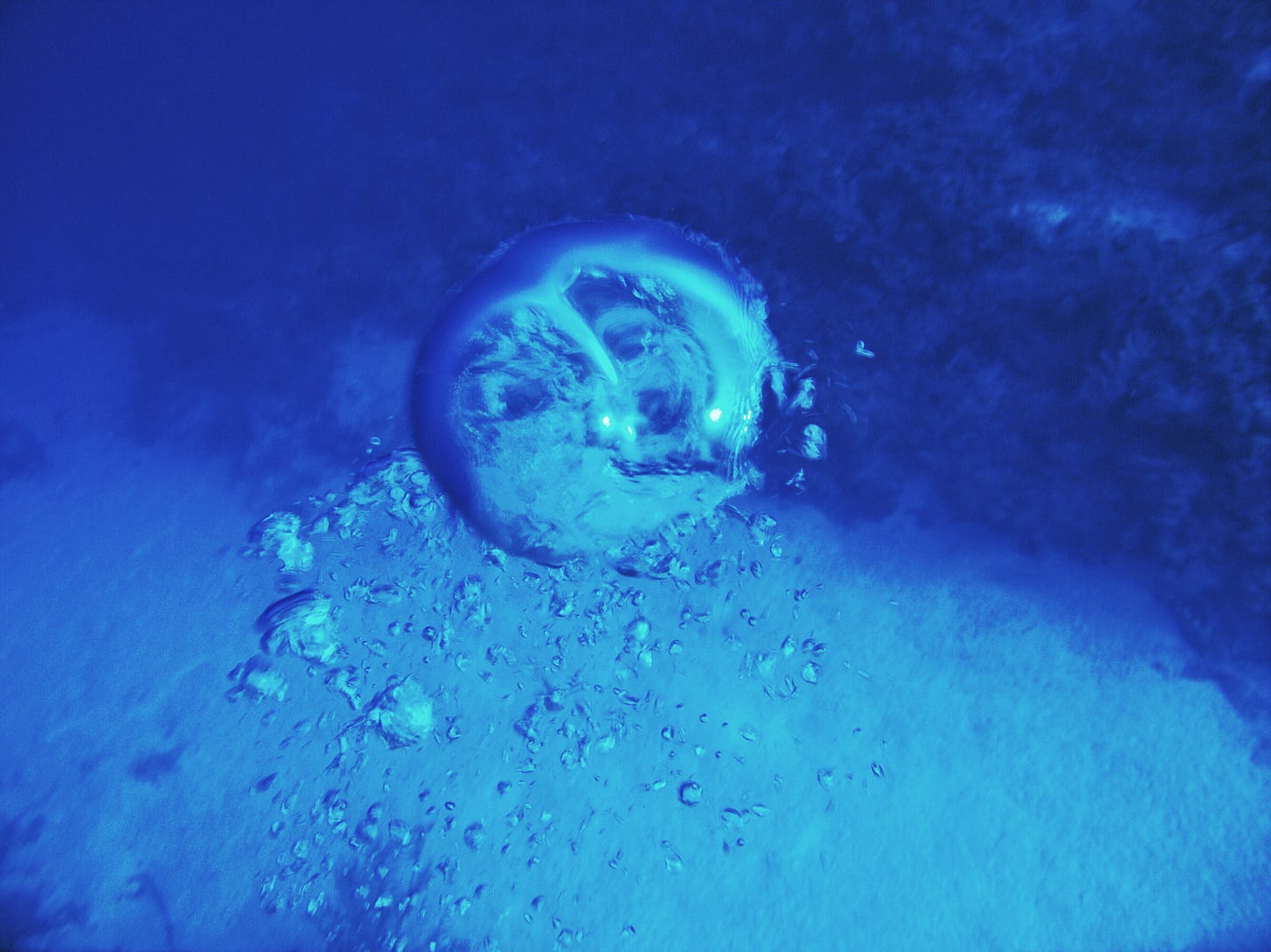Imagine looking through the peep hole in your door. You see a weird, blurry, out of shape perspective on your neighbor’s house and maybe a tree in your front yard.
You really study that view as long as you can, although you have to hold your breath while you are doing it. So you can only stand there a minute or two at a time.
After a while you write a book about what you’ve seen and call it a “Natural History of the World.”
That’s the rough equivalent of what we know about the deep ocean (below 200 meters/656 feet of seawater). A recent study found that we have visually seen the rough equivalent of Rhode Island underwater.
Abstract
Despite the importance of visual observation in the ocean, we have imaged a minuscule fraction of the deep seafloor. Sixty-six percent of the entire planet is deep ocean (≥200 m), and our data show that we have visually observed less than 0.001%, a total area approximately a tenth of the size of Belgium. Data gathered from approximately 44,000 deep-sea dives indicate that we have also seen an incredibly biased sample. Sixty-five percent of all in situ visual seafloor observations in our dataset were within 200 nm of only three countries: the United States, Japan, and New Zealand. Ninety-seven percent of all dives we compiled have been conducted by just five countries: the United States, Japan, New Zealand, France, and Germany. This small and biased sample is problematic when attempting to characterize, understand, and manage a global ocean.
This is not to take light of the work that has been done by ocean scientists. At all. It’s just the extraordinary challenges of sending humans, or cameras, deep into the ocean, that make it difficult. Almost like the absurd notion of sending humans to the moon.
And don’t get me wrong on that, either. I am a fully-committed space geek. It just seems like we haven’t put the same effort into the ocean as we have space. Where is the equivalent of the Hubble Telescope for the deep ocean?
Of course, I say this as NOAA’s funding has been cut significantly. Ocean science has come to a near standstill because of the anti-science stance of our federal government right now. The scientists that are left are just trying to hold everything together and keep from going backward.
Projects like Deep are developing ways to further deep ocean exploration by allowing humans to stay for two weeks at a time at 200 meters and be able to swim out and around the base without worries of decompression sickness. That is a privately-funded venture that is developing new technologies to expand our knowledge.
Currently, there is a renewed push for deep ocean mining. Industry is looking for ways to exploit potential minerals on the ocean floor, or below it. But we just don’t know what’s down there.
The links have been everywhere but if you haven’t seen it, this is what it looks like when industrial fishing boats trawl the bottom for their catch. (I honestly can’t watch the whole thing.) The stunning amount of destruction and killing of bycatch is totally unacceptable.
Are we prepared to continue that same level of destruction on the ocean that we know nothing about?
I am from a state that has been victimized by outside companies coming in and taking natural resources, leaving a mess when they are done and taking away all of the money when they leave. I’ve seen the damage left in their wake.
Let’s not strip-mine the deep ocean without knowing what we are destroying in the process.
I’m keeping this Substack free for now, but if you’d like to support it anyway, buy me a cup of Kofi.
Check out my fiction at BooksbyEric.com.
I also recommend you follow me on my Facebook Author Page, Instagram and Threads.


